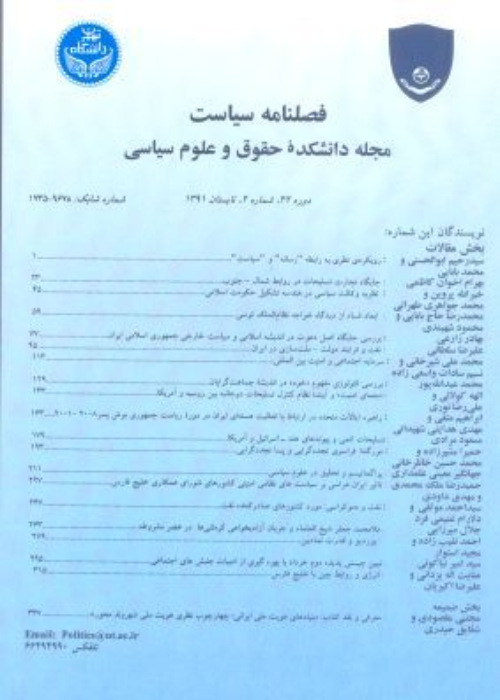Factors Influencing and Reproducing Income Inequality: A Case Study of India
Income inequality has attracted a lot of serious attention of policymakers, ruling elites, and scholars. Each of these three groups has tried to identify the causes of occurrence and continuity of this type of inequality from their own perspectives, and provide solutions to mitigate it. The beginning of the third millennium was accompanied by an intensification of inter-country, and intra-country income inequalities to such an extent that the efforts of the international community —which had previously been able to reduce poverty and absolute hunger in the framework of documents such as the Millennium Development Goals (MDGs) and Sustainable Development Goals (SDGs)—have failed to alleviate them. Despite the economic progress of the last three decades, the persistence of income inequality in the Indian community has raised a big question about its underlying causes in the minds of some researchers. A careful literature review shows that experts regard government’s policy priorities and choices, unequal social system, and global environment as factors leading to the persistence of inequality. Identifying the causes of the emergence and perpetuation of income inequality in different economies is crucial. In fact, the threats posed by this type of inequality are considered as serious as the risks of terrorism as specified in key documents such as the Global Threat Report.
The main objective of this study is to examine the causes of continuing income inequality in India, which has lately recorded a remarkable economic growth rate. Indeed, India has consistently experienced high growth rates over the past few years. This country which is often called the world's largest democracy, is trying to be recognized as one of the top three economies in the world. Its other ambitious goal is to become a permanent member of the Security Council. Economic and scientific development of India have attracted universal attention these days, in spite of the fact that its name was associated with widespread poverty in the past. Exports of Indian goods to the international markets have sharply increased. It has been argued that a set of factors including social system deficiencies, unbalanced eeconomic growth, and globalization through such policies as privatization and trade liberalization have contributed to the persistence of inequality in Indian society. It@seems that different political leaders and decision-makers who have formed governments in India in the past few years have given priority to rapid economic growth instead of reducing income inequality. The continuity of this trend will be problematic because the issue of rising income inequality within and between countries has been a cause for concern in other societies, which have succeeded in achieving high rates of economic growth and even reducing absolute poverty and hunger. The key research question is: How has economic growth and development led to the rising of income inequality in India? In the hypothesis, it is argued that the most important factors affecting income inequality in India are the governmental emphasis on economic growth and insufficient attention to programs aimed at reducing inequalities. A single-case study method was used to analyze the various dimensions of India's income inequality using data collected by the various researchers and presented in the World Bank reports, in addition to the analysis of historical evidence and documents.
The findings of the article show that India’s unprecedented income inequality is because of three types of causes: 1) The socio-cultural causes of which the caste system of India is the most important one; 2) The political causes which include public policies formulated and implemented by the government such as economic development programs and land reform; and 3) The global causes like those associated with the process of globalization and its instruments (i.e., privatization, trade liberalization, and foreign investment). It is clear that India's caste system (old system of social hierarchy) and the serious determination of the Indian government to take advantage of globalization to achieve higher economic growth remain the main obstacles to the reduction of income inequality in this country which has largely been preoccupied with rapid economic growth at the expense of lessening the growing inequalities. As long as the Indian government emphasizes economic growth and development through globalization, it will not be possible to reduce its income inequalities in the near future.
- حق عضویت دریافتی صرف حمایت از نشریات عضو و نگهداری، تکمیل و توسعه مگیران میشود.
- پرداخت حق اشتراک و دانلود مقالات اجازه بازنشر آن در سایر رسانههای چاپی و دیجیتال را به کاربر نمیدهد.


